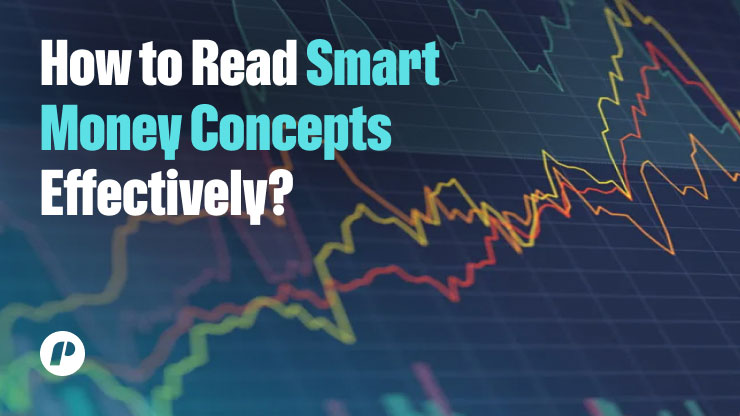
As a new trader, many questions surround profitability and gaining money instead of losing it. Have you found yourself curious about Smart Money Concepts (SMC) but felt overwhelmed by its technical jargon? You’re not alone. This guide cuts through complexity. Understanding how financial markets operate is crucial, especially when embarking on your trading journey. So, what is the Smart Money Concept for beginners? In simple terms, it’s a practical and simplified way to understand how the most prominent players – banks and institutions – influence prices. Crucially, this offers a clear advantage. Therefore, this article serves as a straightforward introduction, providing clear, step-by-step guidance on how to learn Smart Money Concepts effectively for beginners. Our foundational guide thoroughly covers Smart Money Concepts’ core principles and all its essential elements.
Key Notes
-
- Smart Money Concept for Dummies
- How to Read Smart Money Concepts Effectively?
- How to Study Smart Money Concepts?
- Practical Basics for Beginners
- SMC in the Forex Market
This piece focuses on making powerful concepts accessible and actionable for new traders like you, helping you build a solid analytical foundation for future success.
Smart Money Concept for Dummies
New traders often face questions about profitability and how to generate profits instead of losses. Have you found yourself curious about Smart Money Concepts (SMC) but felt overwhelmed by jargon? You’re not alone. This guide cuts through complexity. What is the Smart Money Concept for Dummies? Simply put, it’s a practical and simplified way to understand how major players – banks and institutions – influence prices, offering a clear advantage. Imagine large institutions leaving visible “footprints” on the charts. SMC teaches you to recognize these. It’s like understanding their secret market language. This foundational understanding simplifies the initial learning curve, making complex market dynamics accessible. This piece helps you grasp Smart Money Concepts for beginners with ultimate simplicity.
Why This Simple Understanding Matters for Beginners
Building on the basic idea of “dummies” SMC, what is the Smart Money Concept for beginners? It’s your easy start, providing clear, step-by-step guidance on how to learn Smart Money Concepts for beginners effectively and gain actionable insights. For beginners, this means moving beyond guesswork. By focusing on institutional movements, new traders navigate markets with far greater clarity. This piece makes explicitly powerful concepts accessible and actionable for new traders like you. We break down the process, helping you interpret chart patterns through an institutional lens. Our foundational guide, “Understanding Smart Money Concepts: The Core Principles,” offers an in-depth exploration of the core principles and essential elements of Smart Money Concepts. This knowledge empowers you to build a solid analytical foundation for future success.

How to Read Smart Money Concepts Effectively?
After grasping SMC’s basic idea, your next step is learning how to read Smart Money Concepts effectively on your charts. Reading Smart Money Concepts for beginners effectively doesn’t involve complex indicators. Instead, it means observing specific price behaviors that signal institutional action. So, where should beginners focus their attention when reading charts? Begin by looking for swift, powerful price movements that leave imbalances or gaps. These are clear “footprints.” Many beginners find success in learning to read Smart Money Concepts for beginners’ principles through educational frameworks, such as those taught by Inner Circle Trader (ICT) concepts. ICT principles, for example, often simplify chart reading by focusing on institutional order flow and liquidity. By understanding these clues, you can begin to decipher the market’s true intentions.
This clarity helps you move beyond guesswork in your trading analysis. It guides you towards interpreting the market’s deeper narrative, revealing the strategic plays of large financial institutions that shape prices.
Identifying Key Institutional Footprints
Reading Smart Money Concepts effectively involves recognizing specific recurring patterns on your chart. First, focus on shifts in market structure. Observe how price creates higher highs and higher lows in an uptrend, or lower lows and lower highs in a downtrend. A “Break of Structure” (BOS) indicates trend continuation when price surpasses a previous high or low. Conversely, a “Change of Character” (ChoCH) signals a potential trend reversal, suggesting institutional intent to change direction.
Furthermore, pay close attention to liquidity grabs. These occur when institutions briefly push prices beyond obvious highs or lows (where traders typically concentrate stop-loss orders) before sharply reversing. This activity often fuels their larger, actual directional moves. Understanding these manipulations is crucial. It helps you anticipate where significant turning points might emerge.
Deciphering Order Flow and Intent
Beyond structural shifts and liquidity, compelling SMC reading involves deciphering institutional order flow and its underlying intent. Look for the formation of Order Blocks and Fair Value Gaps (FVG). Order Blocks are specific price areas where institutions executed large orders, often serving as future magnet zones. FVGs, on the other hand, represent rapid price movements that indicate market inefficiencies. Moreover, learn to identify Points of Interest (POI). These are refined areas within Order Blocks or FVGs where price is highly likely to re-engage with institutional orders. Recognizing these zones allows you to anticipate precise entries and exits. This systematic reading of Smart Money Concepts equips you to understand why the market moves, not just that it moves, empowering informed trading decisions.
How to Study Smart Money Concepts?
Having understood SMC’s fundamental concept, your immediate question is how to learn Smart Money Concepts for Beginners effectively. A systematic approach provides the most straightforward path for new traders. While self-study is feasible, specialized educational resources tend to expedite the process. Think of video-on-demand (VOD) courses, for instance, that visually simplify complex subjects so effectively. Most credible trading programs also feature well-developed curricula. These usually take you from fundamental principles to higher-level applications. Such systematic learning tracks offer a methodical progression. They develop foundational knowledge incrementally, one step at a time. It’s essential to choose a program whose style aligns with your preferences. Ultimately, diligent study constitutes the foundation for mastering SMC techniques.
What is the Smart Money Concept for Beginners Bible?
Many aspiring traders often search for the definitive “Smart Money Concepts for Beginners Bible.” What exactly does this mean? Essentially, it refers not to a single book, but rather to a comprehensive understanding of all foundational Smart Money Concepts for Beginners’ principles and their practical application. Think of it as mastering the complete ecosystem of institutional trading. It involves diligently studying elements like order blocks, fair value gaps, liquidity, and market structure. The true “Bible” emerges from consistent analysis and real-world experience, internalizing how smart money truly moves prices. It represents a profound understanding that enables confident and informed trading decisions. This mastery becomes your ultimate guide in navigating complex markets.

Getting Started with Trading: Practical Basics for Beginners
Grasping Smart Money Concepts (SMC) provides invaluable analytical power. However, translating that knowledge into actual trading requires understanding practical basics. For new traders, getting started in fundamental markets involves more than just chart analysis. This section bridges the gap between theory and execution. We will explore essential considerations for anyone taking their first steps in live trading. Essential considerations include selecting appropriate markets and understanding fundamental trading mechanics. Moreover, we’ll cover crucial rules for managing smaller accounts. Ultimately, mastering these practical elements in conjunction with your SMC knowledge is vital. It prepares you for confident and disciplined market participation, ensuring your analytical edge translates into practical action.
Choosing Your Market: Stocks for Beginners
For many new traders, the stock market often presents the most familiar starting point. Choosing your market, for instance, is a crucial initial decision. Stocks, for example, offer excellent accessibility and generally more straightforward trading mechanics compared to other assets, such as foreign exchange (forex) or commodities. Beginners can start by researching well-known companies. Understanding stock markets involves grasping how company shares trade on exchanges worldwide. While SMC principles apply universally, beginning with a familiar market allows you to focus on the methodology itself. This approach helps build confidence in your chart analysis. Ultimately, the “best stocks for beginners” aren’t about specific tickers. Instead, they involve applying analytical frameworks, such as Smart Money Concepts, to any liquid equity. This approach enables informed decision-making.
Essential Trading Mechanics: Order Types
Beyond choosing your market, understanding essential trading mechanics is crucial. Mastering basic order types ensures that your trading strategy translates accurately into action. Market and limit orders are the two most common. A market order, for instance, executes immediately at the current best available price. While simple, it does not offer a price guarantee. Conversely, a limit order allows you to set a specific price at which you’re willing to buy or sell. It guarantees price but not execution. For beginners, knowing these distinctions is vital. They enable precise entry and exit points, particularly when applying Smart Money Concepts, where exact timing is crucial. Proper order type selection ultimately protects your capital and enhances potential profitability.
Managing Small Accounts: Understanding PDT Rules
For beginners starting with limited capital, understanding specific regulatory rules is paramount. In the US equity markets, one crucial example is the Pattern Day Trader (PDT) rule. Enforced by FINRA, this regulation aims to curb excessive risk-taking in small accounts. It classifies you as a “Pattern Day Trader” if you execute four or more day trades within a five-business-day period in a margin account. This classification applies if their day trades represent over six percent of their total trades. Crucially, once designated, such traders must maintain a minimum account balance of $25,000. Otherwise, their account can be subject to onerous restrictions. New traders with smaller accounts often need to adjust their strategies, for example, by focusing on swing trading or closely managing their day trades. Modifying strategies avoids the PDT designation while still being able to learn Smart Money Concepts effectively.
The Path to Success: Beyond the Fundamentals
Grasping Smart Money Concepts (SMC) provides invaluable analytical power. However, true trading success extends beyond theoretical knowledge and basic execution. It requires an active mindset, unwavering discipline, and a commitment to continuous growth. This SMC journey guides you through your transition from a beginner to a consistently profitable trader. We’ll delve into steps for cultivating a resilient approach. Moreover, we’ll explore exciting opportunities, such as the funded phase, accessible to proficient traders. Ultimately, this journey transforms analytical insights into consistent market performance and long-term financial goals.

SMC in the Forex Market: Prop Firm Opportunities
The foreign exchange (forex) market presents a significant opportunity for applying Smart Money Concepts. It offers 24/5 trading and immense liquidity. Furthermore, understanding how smart money manipulates currency pairs is crucial for success in this arena. Specifically, institutional order flow, liquidity sweeps, and precise entry points, based on concepts such as order blocks, are vital in forex trading. After mastering their SMC skills, many traders pursue opportunities with forex prop firms. These firms provide substantial capital to experienced traders, enabling them to trade larger positions without risking their funds. This pathway offers a clear career progression. Ultimately, consistent profitability through SMC analysis truly opens doors to trading professionally, making forex a key target for advanced SMC application.
Conclusion: Your Path to Smarter Trading Begins
You’ve begun the important journey into Smart Money Concepts (SMC), designed for beginners. This manual simplifies complex concepts, ranging from what smart money is and how to identify its footprints, to practical applications such as selecting markets and trading small accounts. You now know that SMC isn’t a secret but rather a disciplined method of market study. Learning these concepts through organized research and practical application establishes a solid foundation for effective learning. This insight empowers you to transcend guesswork, making more confident and informed decisions in any market, including forex and prop firm opportunities. Ultimately, your path to consistent profitability truly begins with this fundamental change in thinking.
If you liked this post make sure to share it!







